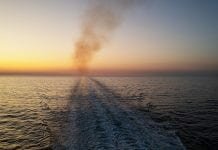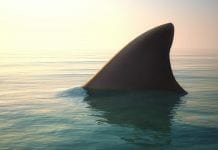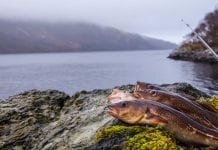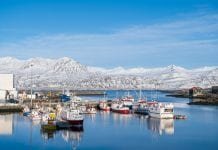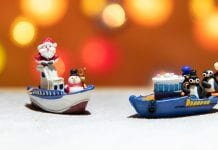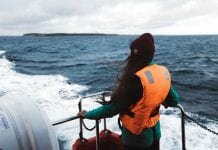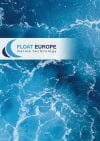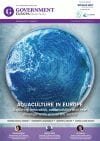
Dr Stefan Micallef of the International Maritime Organization discusses the environmental impact of its new ballast water convention.
In September 2017 the International Convention for the Control and Management of Ships’ Ballast Water and Sediments entered into force after ratification by Finland in 2016. The convention seeks to mitigate the potential negative environmental effects, including the spread of pathogens and aquatic organisms, engendered by the exchange or discharge of ballast water by ships, particularly in coastal areas.
The treaty was proposed in 2004 by the International Maritime Organization, which is the United Nations’ specialised agency with responsibility for the safety and security of shipping and the prevention of marine and atmospheric pollution by ships. The organisation has spent almost 30 years investigating and lobbying for stronger regulations on the taking on, exchange and treatment of ballast water, to limit its potential environmental impact.
Dr Stefan Micallef, director of the IMO’s Marine Environment Division, answered PEN’s question about his hopes for the treaty as it enters into force, the measures that it introduces to regulate the exchange of ballast water, and the positive impact that the organisation hopes the new regulations will have on the marine environment.
What were the primary concerns about the ways in which ships were managing ballast water that led to the adoption of the treaty in 2004?
Since the introduction of steel-hulled vessels, water has been used as ballast to stabilise vessels at sea. Ballast water is pumped in to maintain safe operating conditions throughout a voyage. This practice reduces stress on the hull, provides transverse stability, improves propulsion and manoeuvrability, and compensates for weight changes in various cargo load levels and due to fuel and water consumption. But this ballast water can contain thousands of aquatic or marine microbes, plants and animals, which are then carried across the globe. There were no requirements to treat or analyse the ballast water for many decades.
Untreated ballast water released at the ship’s destination could potentially introduce a new invasive marine species. Hundreds of such invasions have already taken place, sometimes with devastating consequences for the local ecosystem.
Scientists first recognised the signs of an alien species introduction after a mass occurrence of the Asian phytoplankton algae Odontella (Biddulphia sinensis) in the North Sea in 1903. But it was not until the 1970s that the scientific community began reviewing the problem in detail. In the late 1980s, Canada and Australia were among countries experiencing particular problems with invasive species, and they brought their concerns to the attention of IMO’s Marine Environment Protection Committee (MEPC).
IMO has been at the forefront of the international effort by taking the lead in addressing the transfer of invasive aquatic species through shipping. In 1991 the MEPC adopted the ‘International Guidelines for preventing the introduction of unwanted aquatic organisms and pathogens from ships’ ballast water and sediment discharges’ (resolution MEPC.50(31)); while the United Nations Conference on Environment and Development (UNCED), held in Rio de Janeiro, Brazil, in 1992, recognised the issue as a major international concern.
In November 1993 the IMO Assembly adopted resolution A.774(18) based on the 1991 Guidelines, requesting the MEPC and the Maritime Safety Committee (MSC) to keep the Guidelines under review with a view to developing internationally applicable, legally binding provisions. While continuing its work towards the development of an international treaty, the organisation adopted, in November 1997, resolution A.868(20) – ‘Guidelines for the control and management of ships’ ballast water to minimise the transfer of harmful aquatic organisms and pathogens’ – inviting its member states to use these new guidelines when addressing the issue of invasive aquatic species.
After more than 14 years of complex negotiations between IMO member states, the International Convention for the Control and Management of Ships’ Ballast Water and Sediments (BWM Convention) was adopted in 2004 to introduce global regulations to control the transfer of potentially invasive species. With the treaty now in force, ships need to manage their ballast water.
When exchanging ballast water in coastal areas rather than open seas, what kind of environmental impact does this have?
When ships exchange their ballast water in open seas, away from coastal areas, fewer organisms will survive. Coastal organisms taken up in in the original ballast water are not suited for the open sea. Similarly, open-sea organisms taken up during the exchange are not suited for the coastal environment in which the ballast water will eventually be discharged. Therefore, ships will be less likely to introduce potentially harmful species when they release the ballast water. Ideally, to achieve this, the exchange should take place at least 200 nautical miles from land and in water at least 200 metres deep, in accordance with the so-called ‘D-1 standard’.
If the exchange takes place in a coastal area instead, then obviously this process may not be effective. The potential impact would therefore be that more organisms could survive and become invasive.
It is for this reason that port and coastal states should designate appropriate ballast water exchange areas and establish contingency measures for ships that may not be able to conduct ballast water exchange in accordance with the D-1 standard.
The convention requires ships to produce a ballast water management plan. What would this involve?
The ballast water management plan (BWMP) is specific to each ship and must be approved by its flag state. The BWMP should, inter alia, detail safety procedures for the ship and the crew associated with ballast water management; provide a detailed description of actions to be taken and supplemental ballast water management practices; include the procedures for the co-ordination of shipboard ballast water management with the coastal state authorities; and designate the officer on-board in charge of ensuring that the plan is properly implemented.
In addition, a BWMP should also contain plans/drawings and a description of the ballast system; information on ballast water sampling points and sampling procedures; operational or safety procedures and restrictions; duties of the ballast water management officer; recording requirements; crew training and familiarisation, and so on.
What kind of enforcement mechanisms are there within the convention to penalise those who fail to meet its standards?
Monitoring and enforcement of the BWM Convention – as with other IMO treaties – is the remit and responsibility of the states which are party to the convention. Parties are responsible for issuing ships flying their flag with the correct certificate. An International Ballast Water Management Certificate (ships of 400gt and above) is issued by or on behalf of the administration (flag state) and certifies that the ship carries out ballast water management in accordance with the BWM Convention, and specifies which standard the ship is complying with, as well as the date of expiry of the certificate.
Ships are subject to port state control in any port or offshore terminal of a party to the BWM Convention. This inspection may include verifying that there is on-board a valid certificate and an approved ballast water management plan; inspection of the ballast water record book; and/or sampling of the ship’s ballast water, carried out in accordance with the guidelines (G2). However, the time required to analyse the samples shall not be used as a basis for unduly delaying the operation, movement or departure of the ship.
The treaty was adopted in 2004 but only entered into force this year. Were there challenges in encouraging countries to ratify it?
To date, the BWM treaty has been ratified by 67 countries, which represent 74.91% of world merchant shipping tonnage. The convention stipulated that it would enter into force 12 months after ratification by a minimum of 30 states, representing 35% of world merchant shipping tonnage. These criteria were reached in September 2016 when Finland became the 52nd state to ratify, bringing the tonnage over the required limit. Since then, further states have ratified the treaty and the BWM Convention entered into force on 8 September 2017.
It is fair to say that the treaty took a while to enter into force. Suitable ballast water management systems were not immediately available and guidelines to support the BWM Convention needed to be developed. But these issues were addressed over time through the approval of several ballast water management systems, the development of a robust framework for such approvals, and the development of a comprehensive set of guidelines covering many aspects of the implementation of the convention.
To support ratification by states, as well as research and innovation, IMO executed the Global Environment Facility (GEF)-United Nations Development Programme (UNDP)-IMO GloBallast Partnerships Programme (2000-2017). This successful project focused on assisting developing countries to ratify and implement the BWM Convention.
Now, the convention will have a positive impact on the health of the oceans and the environment, in terms of reducing the spread of potentially harmful organisms and pathogens in ballast water. This supports the UN’s Sustainable Development Goal 14, relating to the oceans.
Dr Stefan Micallef
Director
Marine Environment Division
International Maritime Organization
http://www.imo.org/
This article will appear in Pan European Networks: Government 24, which will be published in January, 2018.


